Chocolate Covered Coffee Beans Recipe
You love coffee. And you love chocolate. So you no doubt ask yourself if you can mix the two together.
Yes! Covering coffee beans with chocolate is a sweet, rich combination that creates a delicious treat with an added energy boost.
Can you make chocolate-covered coffee beans at home? You sure can! The recipe and process are easy and give you full control over the type of coffee bean and the amount of chocolate you want to use.
Let’s dive in and see how you can blend these two old friends into an edible snack.
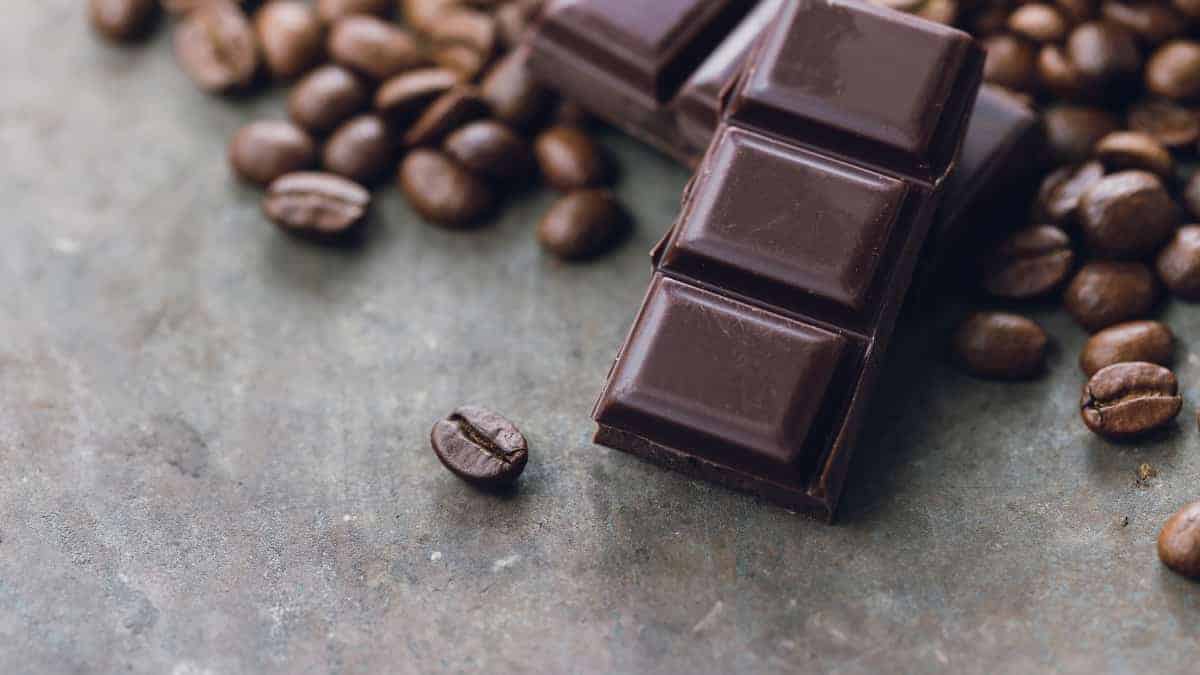
Chocolate Covered Espresso Beans
The Coffee Beans
While this snack is commonly called chocolate-covered espresso beans, you can use any beans you’d like. For example, you could use coffee beans you buy at the grocery store or coffees from a specialty coffee roaster.
In fact, calling them chocolate-covered espresso beans is basically a misnomer. To make espresso, you can use any beans; the beans don’t have to be roasted a certain way nor called espresso beans.
“Espresso beans” are beans that are roasted darker to produce a more balanced espresso shot. In comparison, roasts that are favored for pour-overs like an Aeropress or Chemex are often lighter. A lighter roast lets the origin and processing shine through, as well as complex flavors the beans might have.
To make chocolate-covered coffee beans, you may decide to use those dark roasted coffee beans or espresso beans.
Why?
Dark roasted beans may have a stronger flavor and can stand up to the intense chocolate coating. They may also be sweeter, which would create more harmony with the chocolate on the outside.
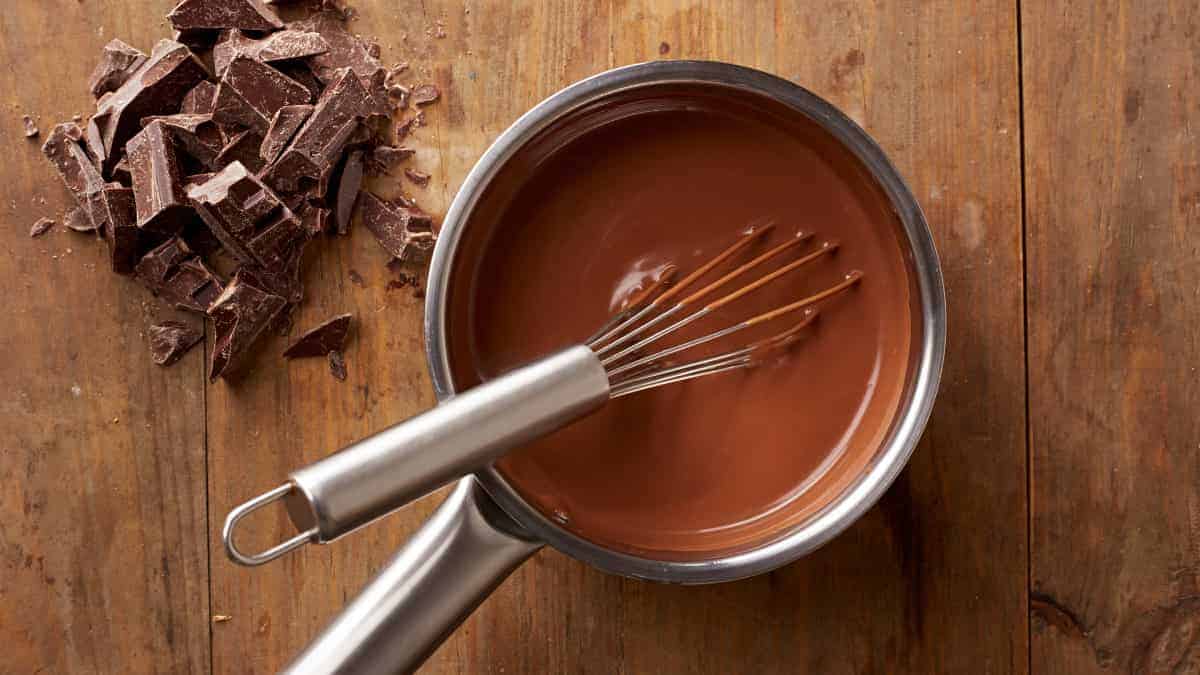
The Dark Chocolate
What chocolate do you need to make these coated coffee beans? As with the rules on which coffee to use, it’s up to you.
Consider the final product you’d like to have. Do you want an intense, rich chocolate flavor? A comforting, creamy snack? Or a bitter punch that helps you keep awake?
You can choose anything from milk chocolate all the way to 100% cacao. So you can simply use your favorite milk chocolate bar or dark chocolate bar for this treat. Chocolate chips can also work well with coffee beans.
If you want a keto-friendly snack, choose chocolate that has no sugar (either 100% cacao or sweetened with Stevia).
I suggest using 70% dark chocolate, which will have a balanced bitterness that goes well with the coffee beans and creates the perfect snack.
For more variety, you could choose to change it up and use white chocolate. Of course, your favorite flavored chocolates can also make an exceptional treat – even a mint chocolate bar.
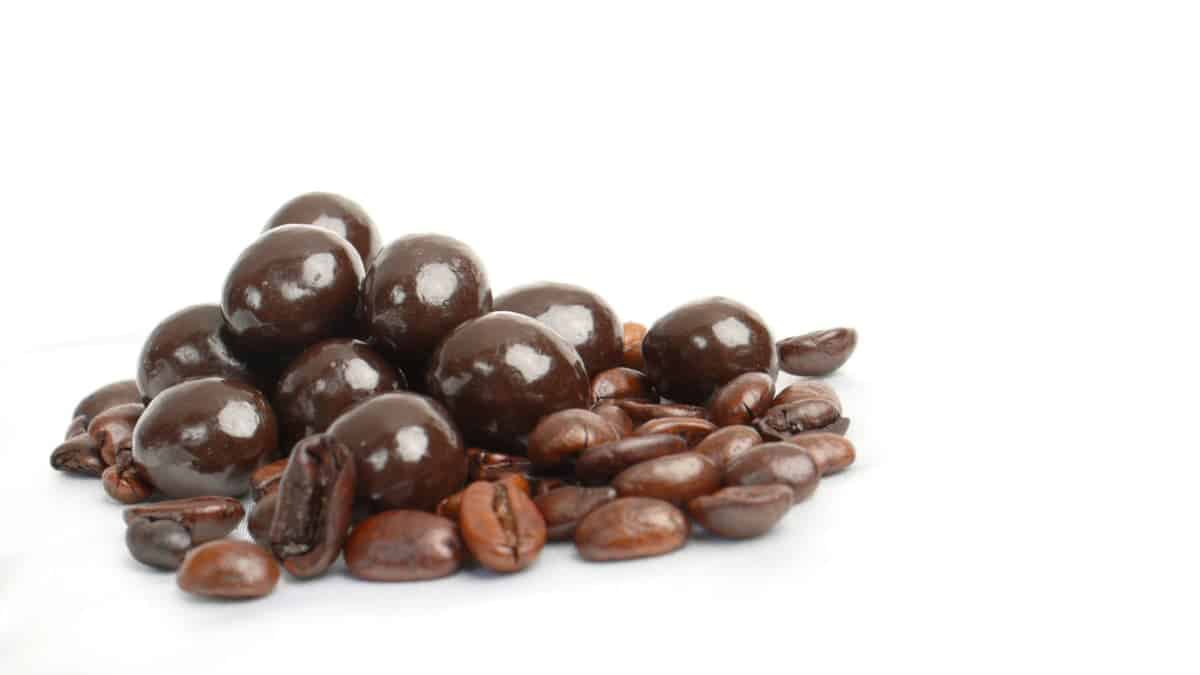
How Much Caffeine Is In Chocolate Covered Coffee Beans?
Are you ready for some math? Let’s break down the numbers to see how you can calculate exactly how much caffeine will be in your personalized version of chocolate covered coffee beans.
A typical 8-ounce mug of brewed Arabica coffee has about 95 mg of caffeine. Coffee recipes vary, but you might use about 16 grams of coffee to brew that mug.
How many beans are in those 16 grams of coffee? I actually did count out the number of beans. In my 16 gram sample, I had 100 beans. So that’s roughly about 1 mg of caffeine per Arabica bean.
Keep in mind that the content could be almost doubled depending on the coffee species and variety. Adding to the complexity, darker roasted coffee beans are lighter and will have more beans per weight.
Now let’s discuss the chocolate you’ll cover the beans with.
Dark chocolate has about 0.5 – 1 mg of caffeine per gram. Of course, that will vary if you’re using 100% chocolate, which packs higher levels.
So if you have Arabica coffee beans covered in 2 grams of dark chocolate, you might have almost 3 mg of caffeine for each chocolate covered coffee bean.
What You Need To Make Chocolate Covered Coffee Beans
Essentially, the recipe to make chocolate covered coffee beans is simple. The only ingredients you need are the beans and the chocolate of your choice.
However, here I’ll list every element you need so you can have everything on hand for this coffee bean recipe.
- Roasted coffee beans (about 1/2 cup)
- Chocolate of your choice (2/3 cup)
- Coconut oil (1 tablespoon, optional)
- Cocoa powder (to coat, optional)
- Heating element (microwave or stovetop)
- Bowl or saucepan to heat chocolate in
- Baking sheet (cookie sheet)
- Parchment paper or wax paper
- Fork
- Stirring spoon
How To Make Chocolate Covered Coffee Beans
Step 1
After gathering all of your tools, as mentioned above, the first step of this recipe is to melt the chocolate or white chocolate. You can do that in a microwave or on a stovetop.
Microwave
In a microwave-safe bowl, add chocolate chips or pieces (and coconut oil, if using). Microwave for 30 seconds, stirBut, of and continue to microwave in 30-second increments until the chocolate is melted and has a smooth consistency.
Stovetop
If you choose to melt your chocolate chips or pieces on a stovetop, place the chocolate (and coconut oil, if using) in a pan set over a double boiler.If you don’t have a double boiler, set a glass or metal bowl over your saucepan and put the chocolate in the bowl.
Don’t apply heat directly to your chocolate chips; the chocolate will burn. Heat slowly and stir often until melted.
Step 2
Once your chocolate is melted, drop the coffee in. Use a spoon to coat the beans evenly.
Step 3
Once the coffee beans are well coated, use the fork to fish the beans out one at a time. Let the excess chocolate drip off.
Step 4
Use the fork to carefully place each bean, one by one, on the baking sheet that you’ve lined with wax or parchment paper.
At this stage, you can coat them with cocoa powder if you like the additional hit of chocolate. The cocoa powder also gives a variation in texture.
Step 5
Resist the temptation to eat them right away! Let them set. This will vary in time depending on how warm your kitchen is. You can speed up this process by putting the tray in a freezer or fridge.
Once they set, take them off the parchment paper and put them in an airtight container. To keep the coating looking pristine, consider placing parchment paper between each layer of coffee.
Store your chocolate-covered coffee beans in an airtight container. They could last as long as a month in the freezer – but no one really knows, since they get eaten long before that!
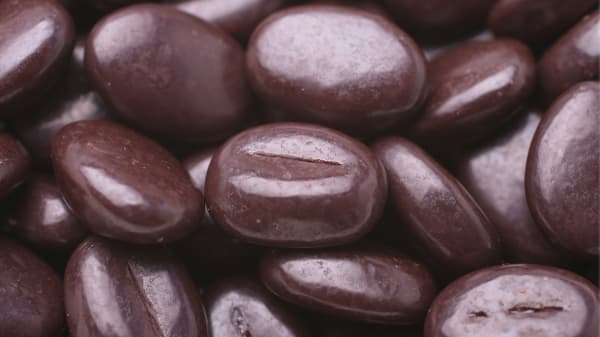
How Many Chocolate-Covered Espresso Beans Equal A Cup Of Coffee?
We already discussed that each chocolate-covered espresso bean might have 3 mg of caffeine. That calculation will vary depending on the type of coffee beans you use (Arabica vs Robusta) and how it was roasted (light or dark).
Taking the calculations one step further, we can figure out how many chocolate covered coffee beans equal the caffeine content in one cup of coffee.
This amount will depend on the coffee recipe you use. Since an average cup of coffee has about 100 mg of caffeine, 33 of these sweet beans may equal one cup.
Of course, that’s a general average since it depends on how the coffee was brewed (French Press vs. drip) and how many grams of coffee were used per cup.
If you want to compare it to espresso, a standard shot of espresso has about 50 mg of caffeine. So you can eat about 17 chocolate covered espresso beans to get the equivalent of a shot of espresso.
Does it sound weird to you that a tiny espresso has half the amount of caffeine as a much bigger mug of drip coffee?
The difference between those two drinks is less about the amount of coffee (and thus caffeine) and more about the amount of water used to brew them.
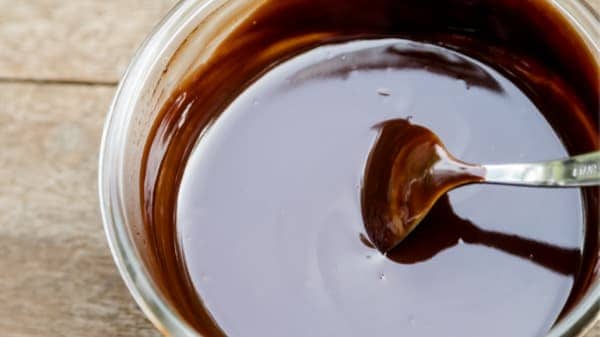
Can You Freeze Chocolate Covered Espresso Beans?
Yes, you can freeze your chocolate covered espresso beans. In fact, you can store them in either the refrigerator or freezer.
If you put them in the freezer, they will last longer. You might want to let them reach room temperature before eating them. Be careful when you let them thaw to avoid unpleasant condensation.
You can also store them at room temperature, especially if you don’t think they will sit around your kitchen for all that long.
A good middle-of-the-road option is to store chocolate covered espresso beans in the refrigerator. That way, they’re always ready for when you need a midday pick-me-up or energy boost.
After all, since chocolate covered espresso beans can be used as toppings for cakes, desserts, and coffee drinks, they do go fast.

